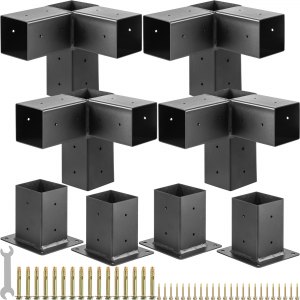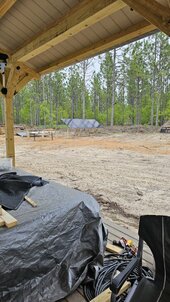Very nice! And simple.This is a timely thread for me as I'm trying to do a new ground mount. While looking into ways to do it I bumped into several versions of the below kit. An angled single slope option would be really nice but I didn't find any.

VEVOR Woodwork Pergola Kit Elevated Wood Stand Kit with Steel Brackets Modular Sizing Pergola Brackets Boot, Shoulder and Lag Bolts for Hunting Blind, Deer Stand Bracket 4 x 4 inches | VEVOR US
Upgrade your outdoor space with VEVOR Pergola Kit, featuring powder-coated carbon steel for rust resistance and easy-install brackets for a stable build.www.vevor.com
I wish someone had these corner brackets with different angles so we could have a 30 degree wooden solar mount! How cool would that be. Would take minutes to throw that together.






